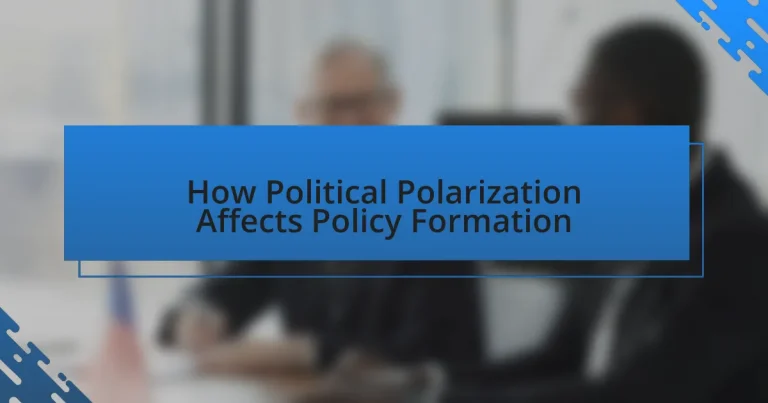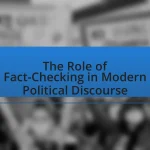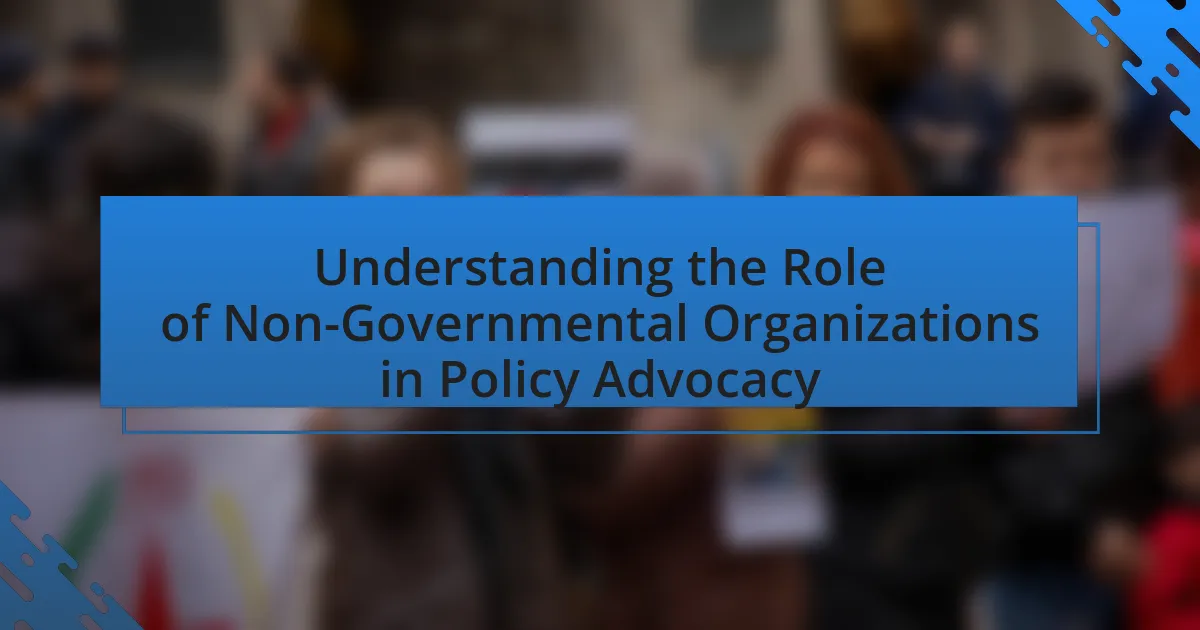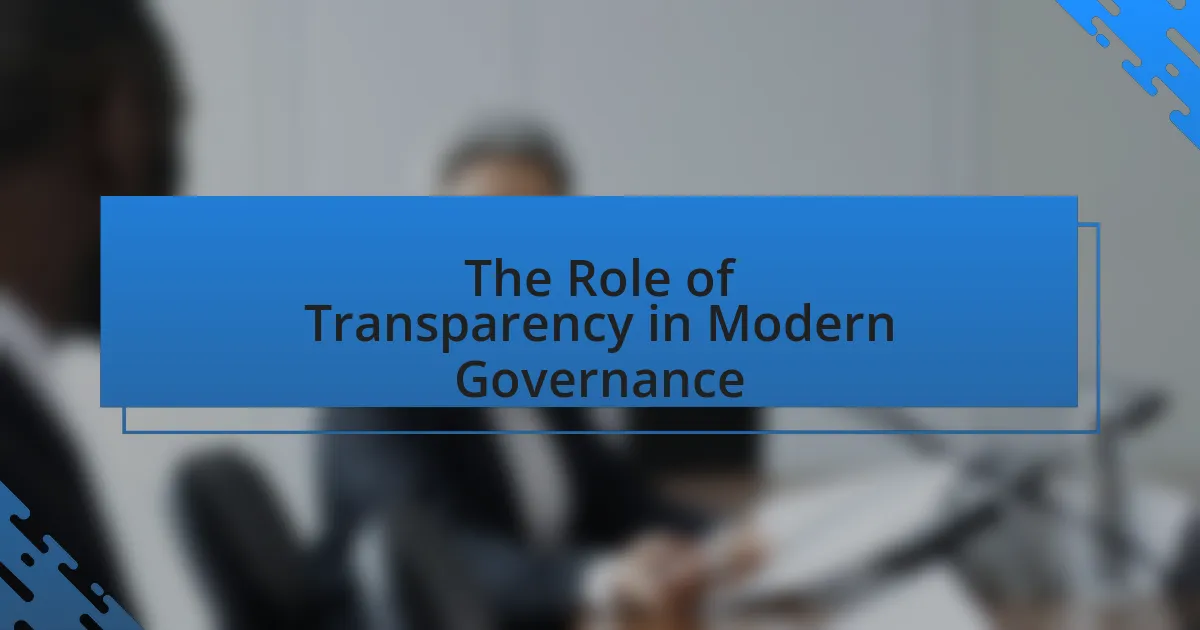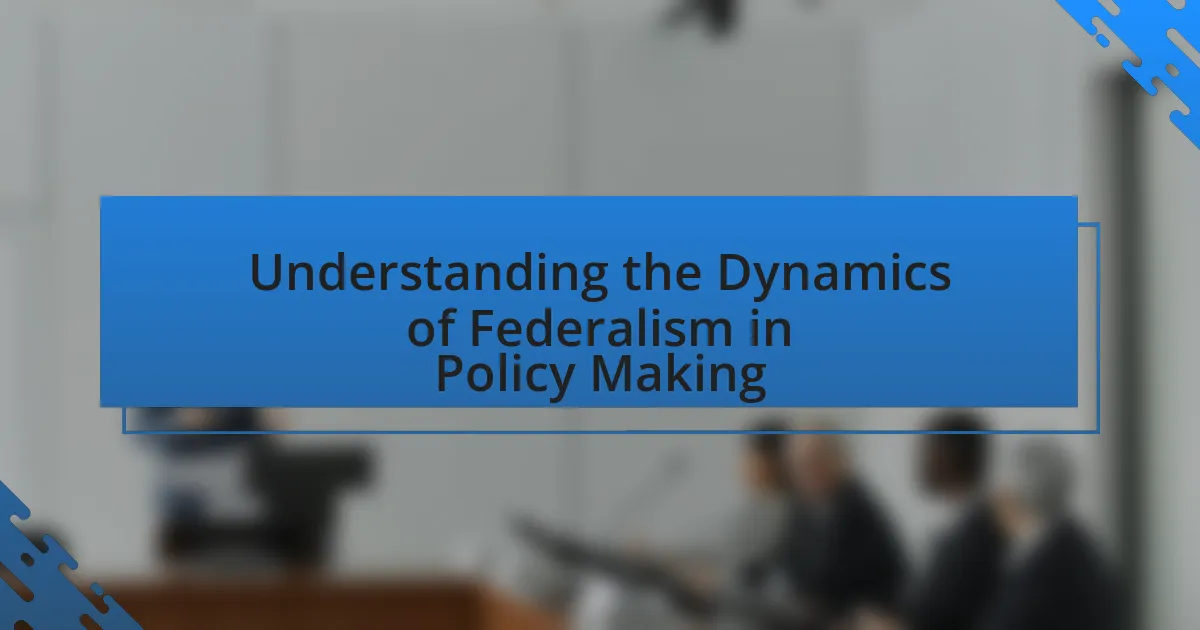Political polarization is the increasing ideological divide between political parties, resulting in extreme partisanship and legislative gridlock. This article examines how polarization affects policy formation by creating barriers to bipartisan cooperation, influencing public opinion, and shaping the legislative process. Key indicators of polarization, such as heightened partisan identity and affective polarization, are discussed alongside regional variations and the role of media in exacerbating divisions. The article also explores the consequences of polarization on policy outcomes, public trust in government, and future electoral dynamics, while suggesting strategies for mitigating its effects on policy-making.
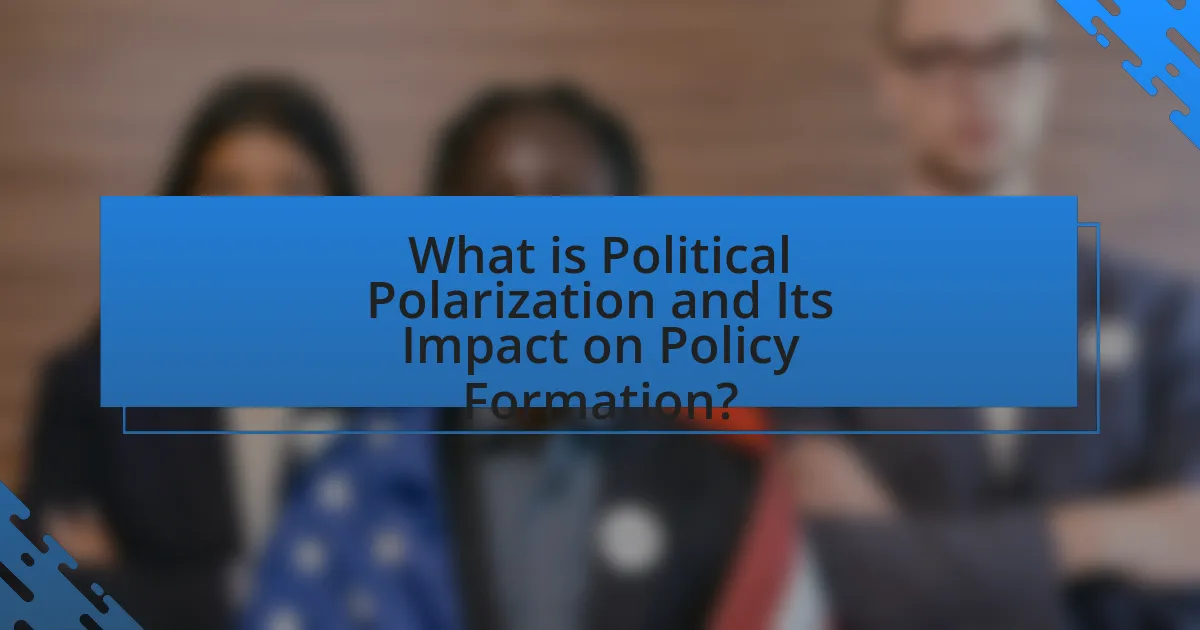
What is Political Polarization and Its Impact on Policy Formation?
Political polarization refers to the growing ideological divide between political parties, leading to extreme partisanship and reduced consensus on issues. This polarization significantly impacts policy formation by creating gridlock in legislative processes, as opposing parties struggle to find common ground. For instance, research by the Pew Research Center indicates that the ideological gap between Democrats and Republicans has widened over the past few decades, resulting in fewer bipartisan agreements and increased difficulty in passing legislation. Consequently, this polarization can lead to stalled initiatives and a lack of comprehensive policy solutions, as lawmakers prioritize party loyalty over collaborative governance.
How does political polarization manifest in contemporary politics?
Political polarization manifests in contemporary politics through increased ideological divides between political parties, leading to gridlock in legislative processes and heightened partisan conflict. This polarization is evident in the stark differences in policy preferences, where Democrats and Republicans increasingly support opposing views on issues such as healthcare, climate change, and immigration. According to a Pew Research Center study, the ideological gap between the two parties has widened significantly over the past two decades, with 36% of Democrats and 43% of Republicans expressing consistently liberal or conservative views in 2017, compared to only 10% in 1994. This division not only complicates bipartisan cooperation but also influences voter behavior, as individuals increasingly align their identities with their political affiliations, further entrenching the polarization.
What are the key indicators of political polarization?
Key indicators of political polarization include increased ideological distance between political parties, heightened partisan identity, and greater affective polarization. Ideological distance is evidenced by the growing divergence in policy preferences, such as the stark differences in views on healthcare and climate change between Democrats and Republicans. Heightened partisan identity is reflected in survey data showing that individuals increasingly identify strongly with their political party, often prioritizing party loyalty over bipartisan cooperation. Affective polarization is demonstrated by rising negative feelings toward opposing party members, as indicated by studies revealing that partisans view members of the opposing party as a threat to the nation’s well-being. These indicators collectively illustrate the deepening divide in political attitudes and behaviors.
How does political polarization differ across various regions?
Political polarization varies significantly across regions, influenced by cultural, economic, and historical factors. For instance, in the United States, polarization is starkly evident between urban and rural areas, with urban centers leaning Democratic and rural regions predominantly Republican. This divide is supported by data from the Pew Research Center, which indicates that in 2020, 81% of urban voters supported Joe Biden, while 72% of rural voters backed Donald Trump. In contrast, European countries exhibit different patterns; for example, Nordic nations tend to have lower polarization levels due to strong social welfare systems and consensus-driven politics. In contrast, Eastern European countries, like Poland and Hungary, have experienced rising polarization linked to nationalist movements and historical grievances. These regional differences in political polarization impact policy formation, as polarized environments often lead to gridlock or extreme policy shifts, depending on the prevailing political climate.
Why is understanding political polarization important for policy formation?
Understanding political polarization is crucial for policy formation because it directly influences the effectiveness and acceptance of policies among different demographic groups. Political polarization creates distinct ideological divides that can hinder bipartisan cooperation, making it challenging to achieve consensus on critical issues. For instance, research by Pew Research Center indicates that increased polarization has led to a significant decline in cross-party collaboration in Congress, resulting in legislative gridlock. This gridlock can prevent timely responses to pressing societal needs, such as healthcare reform or climate change initiatives. Therefore, recognizing the dynamics of political polarization allows policymakers to tailor their strategies, engage in more effective communication, and foster collaboration across party lines, ultimately leading to more robust and widely accepted policies.
What role does public opinion play in shaping polarized policies?
Public opinion significantly influences the development of polarized policies by reflecting the divided preferences and values of the electorate. When a substantial portion of the public holds strong, opposing views on issues, policymakers often feel pressured to align their positions with the prevailing sentiments of their constituents to secure electoral support. For instance, surveys indicate that in the United States, partisan divides on issues such as healthcare and immigration have led to starkly contrasting policy proposals from Democrats and Republicans, illustrating how public opinion can drive legislative agendas in a polarized environment. This dynamic is further evidenced by the fact that elected officials frequently rely on polling data to gauge public sentiment, which can lead to the entrenchment of polarized policies that cater to specific voter bases rather than fostering bipartisan solutions.
How does political polarization influence the legislative process?
Political polarization significantly hampers the legislative process by creating deep divisions between parties, leading to gridlock and reduced bipartisan cooperation. When legislators are highly polarized, they often prioritize party loyalty over compromise, resulting in fewer laws being passed and increased difficulty in addressing pressing issues. For instance, during periods of heightened polarization, such as the 2010s in the United States, Congress experienced numerous government shutdowns and stalled legislation, illustrating how partisan divides can obstruct effective governance.
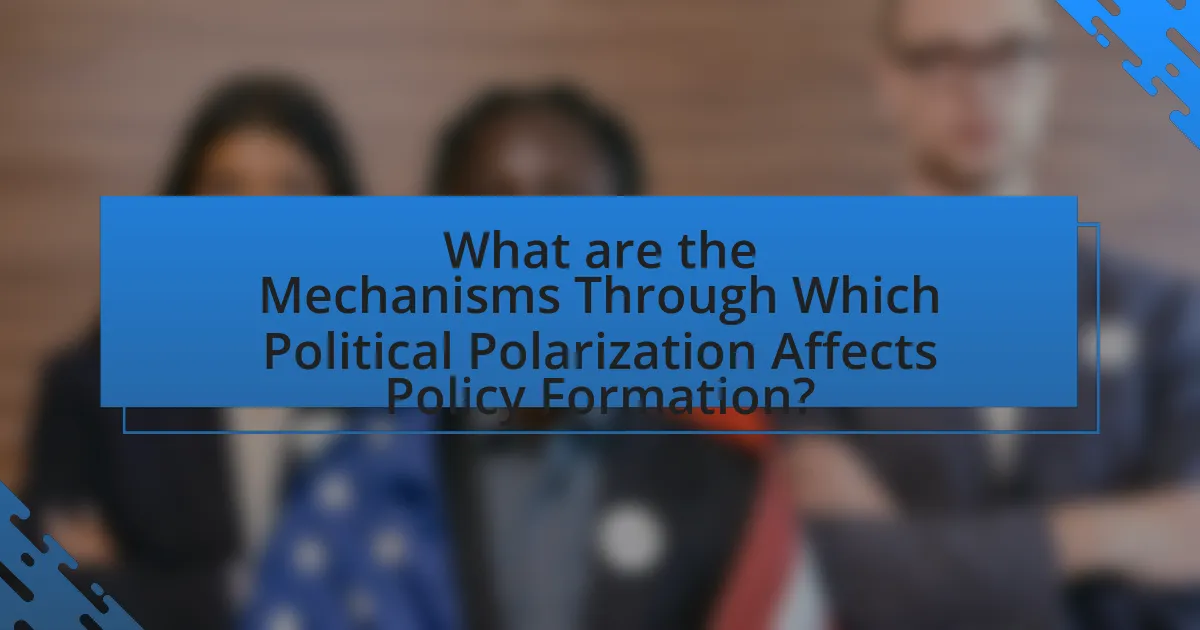
What are the Mechanisms Through Which Political Polarization Affects Policy Formation?
Political polarization affects policy formation primarily through increased partisanship, reduced compromise, and the influence of interest groups. Increased partisanship leads to lawmakers prioritizing party loyalty over bipartisan collaboration, resulting in gridlock and stalled legislation. For example, during the Obama administration, significant healthcare reforms faced intense partisan opposition, illustrating how polarization can hinder policy advancement. Reduced compromise occurs as political factions become more ideologically rigid, making it difficult to reach consensus on critical issues. This was evident in the 2013 government shutdown, where polarized factions could not agree on budgetary matters. Additionally, interest groups leverage polarization to mobilize support for extreme positions, further entrenching divisions and complicating the policy-making process. Research by the Pew Research Center shows that partisan divides have widened significantly over the past two decades, impacting legislative effectiveness and public trust in government.
How do political parties respond to polarization in policy-making?
Political parties respond to polarization in policy-making by adopting more extreme positions and increasing partisan rhetoric. This shift often leads to legislative gridlock, as parties prioritize ideological purity over compromise. For instance, during the Obama administration, the Republican Party largely opposed initiatives such as the Affordable Care Act, reflecting a broader trend where parties align closely with their base, resulting in fewer bipartisan agreements. Additionally, research from the Pew Research Center indicates that partisan animosity has grown, with members of both parties increasingly viewing the opposition as a threat to the nation’s well-being, further entrenching polarized policy-making.
What strategies do parties use to appeal to their polarized bases?
Parties use targeted messaging, identity reinforcement, and mobilization tactics to appeal to their polarized bases. Targeted messaging involves crafting communication that resonates with the specific values and beliefs of their supporters, often utilizing social media platforms to disseminate these messages effectively. Identity reinforcement occurs when parties emphasize shared group identities, fostering a sense of belonging and loyalty among their base. Mobilization tactics include organizing rallies, grassroots campaigns, and leveraging influential figures within the party to energize supporters and increase voter turnout. These strategies are supported by research indicating that parties that effectively engage their bases through these methods tend to see higher levels of support and participation during elections, as evidenced by the increased voter turnout in polarized environments, such as the 2020 U.S. presidential election where both parties saw significant mobilization efforts aimed at their core supporters.
How does polarization affect bipartisan cooperation?
Polarization significantly hinders bipartisan cooperation by creating an environment where political parties prioritize ideological purity over collaboration. This division leads to increased hostility and distrust between parties, making it difficult to reach consensus on policy issues. For instance, a study by Pew Research Center in 2020 found that 77% of Democrats and 83% of Republicans view the opposing party as a threat to the nation’s well-being, illustrating the extent of animosity that polarization fosters. Consequently, this adversarial mindset results in legislative gridlock, as parties are less willing to compromise or engage in constructive dialogue, ultimately stalling effective policy formation.
What role does media play in exacerbating political polarization?
Media plays a significant role in exacerbating political polarization by promoting selective exposure to information that aligns with individuals’ pre-existing beliefs. This phenomenon occurs as individuals increasingly consume news from sources that reinforce their viewpoints, leading to echo chambers where dissenting opinions are marginalized. Research indicates that partisan media outlets, such as Fox News and MSNBC, contribute to this division by framing issues in ways that appeal to specific ideological audiences, thus intensifying partisan identities. A study by the Pew Research Center found that 62% of Americans believe that news organizations favor one side, which further entrenches divisions and reduces the likelihood of bipartisan dialogue.
How does media framing influence public perception of policies?
Media framing significantly influences public perception of policies by shaping how information is presented and interpreted. When media outlets emphasize certain aspects of a policy while downplaying others, they create a specific narrative that can alter public understanding and opinion. For example, studies have shown that framing a healthcare policy as a “right” versus a “privilege” can lead to vastly different public support levels, with the former garnering more favorable responses. This effect is further evidenced by research from the Pew Research Center, which found that individuals exposed to different media frames regarding immigration policy exhibited divergent attitudes based on the framing used. Thus, the way media frames issues directly impacts how the public perceives and reacts to various policies.
What impact does social media have on political discourse?
Social media significantly influences political discourse by amplifying diverse viewpoints and facilitating rapid information dissemination. This platform allows individuals to engage in discussions, share opinions, and mobilize support for various political causes, which can lead to increased political participation. According to a study by the Pew Research Center, 69% of adults in the U.S. use social media, and these platforms have become primary sources for news and political information. Furthermore, social media can contribute to political polarization, as algorithms often promote content that aligns with users’ existing beliefs, creating echo chambers that reinforce divisive narratives. This phenomenon can hinder constructive dialogue and complicate policy formation, as lawmakers may cater to more extreme viewpoints rather than seeking consensus.
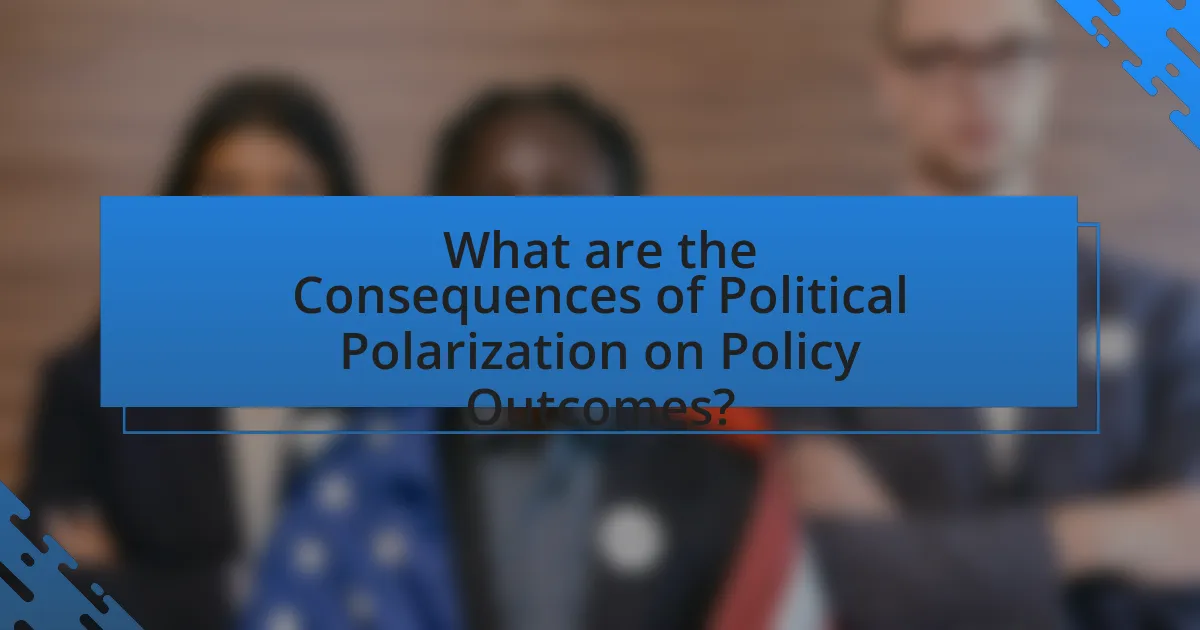
What are the Consequences of Political Polarization on Policy Outcomes?
Political polarization leads to significant consequences on policy outcomes, primarily resulting in legislative gridlock and reduced bipartisan cooperation. When political parties become highly polarized, they often prioritize party loyalty over collaborative governance, which hinders the passage of comprehensive policies. For instance, during the 2013 government shutdown in the United States, stark partisan divisions prevented agreement on budgetary issues, illustrating how polarization can stall essential government functions. Additionally, research by the Pew Research Center indicates that increased polarization correlates with a decline in public trust in government, further complicating the policy-making process as citizens become disillusioned with political institutions. This environment fosters extreme policy proposals that may not reflect the moderate views of the general populace, leading to policies that are less effective and more divisive.
How does polarization affect the effectiveness of policy implementation?
Polarization significantly undermines the effectiveness of policy implementation by creating divisions that hinder consensus and collaboration among stakeholders. When political factions are highly polarized, they often prioritize ideological loyalty over pragmatic solutions, leading to gridlock in decision-making processes. For instance, a study by the Pew Research Center in 2020 found that increased partisan animosity correlates with decreased public trust in government institutions, which can result in lower compliance with policies and regulations. This lack of trust and cooperation can delay or derail the execution of policies, as stakeholders may resist initiatives that they perceive as partisan rather than beneficial for the public good.
What challenges arise in policy execution due to polarization?
Political polarization creates significant challenges in policy execution by fostering gridlock and reducing bipartisan cooperation. When political parties are deeply divided, it becomes difficult to reach consensus on policy initiatives, leading to stalled legislation and ineffective governance. For instance, a study by the Pew Research Center in 2020 found that 85% of Americans believe that political polarization has made it harder for the government to address important issues. This lack of collaboration often results in policies that are either poorly implemented or not implemented at all, as competing factions prioritize their agendas over collective problem-solving. Additionally, polarization can lead to public distrust in government institutions, further complicating the execution of policies that require public support and compliance.
How does polarization impact public trust in government?
Polarization significantly decreases public trust in government. When political polarization intensifies, individuals tend to align more closely with their party’s views, leading to increased skepticism towards opposing parties and their policies. Research indicates that as polarization rises, citizens perceive government actions through a partisan lens, often viewing them as biased or self-serving rather than in the public interest. For instance, a 2020 study by Pew Research Center found that 77% of Democrats and 83% of Republicans believe that the opposing party poses a threat to the nation’s well-being, which undermines trust in government institutions. This erosion of trust can hinder effective governance and policy formation, as polarized citizens are less likely to support bipartisan initiatives.
What are the long-term implications of polarized policy-making?
Polarized policy-making leads to increased governmental gridlock, which hinders effective governance and long-term strategic planning. This gridlock results in inconsistent policies that can destabilize economic and social systems, as seen in the U.S. Congress where partisan divides have led to repeated budget crises and government shutdowns. Additionally, polarized environments foster public distrust in institutions, as citizens perceive their representatives as more focused on partisan battles than on addressing pressing societal issues. Research indicates that such polarization can diminish civic engagement and voter turnout, further entrenching divisions and reducing the likelihood of collaborative solutions to complex problems.
How does political polarization shape future electoral outcomes?
Political polarization significantly influences future electoral outcomes by solidifying party loyalty and reducing the likelihood of cross-party voting. As individuals align more closely with their political parties, they become less open to alternative viewpoints, which can lead to increased voter turnout among the base and a decline in moderate candidates. For instance, research from the Pew Research Center indicates that the share of voters identifying strongly with their party has increased, leading to more predictable voting patterns and a decrease in competitive elections. This trend can result in a more entrenched political landscape, where extreme positions dominate, ultimately shaping policy formation and legislative priorities in a manner that reflects the polarized electorate.
What strategies can mitigate the effects of polarization on policy formation?
To mitigate the effects of polarization on policy formation, fostering bipartisan dialogue and collaboration is essential. Engaging stakeholders from diverse political backgrounds in structured discussions can lead to more inclusive policy solutions. Research indicates that initiatives like the National Institute for Civil Discourse have successfully facilitated conversations that bridge partisan divides, resulting in more comprehensive policy outcomes. Additionally, implementing deliberative democracy practices, such as citizen assemblies, can empower a broader range of voices in the policy-making process, thereby reducing the impact of polarization. Studies show that these assemblies can enhance public trust and lead to policies that reflect a wider consensus, ultimately countering the divisive nature of polarized politics.
What best practices can policymakers adopt to navigate polarization?
Policymakers can adopt several best practices to navigate polarization effectively. First, they should prioritize inclusive dialogue by facilitating discussions that involve diverse perspectives, which can help bridge divides and foster understanding. Research indicates that inclusive policymaking can lead to more sustainable solutions, as seen in the collaborative efforts during the 2015 Paris Agreement negotiations, where multiple stakeholders contributed to a consensus despite differing views. Additionally, employing evidence-based policymaking can help ground discussions in facts rather than partisan opinions, as demonstrated by the success of data-driven initiatives in reducing healthcare costs in various states. Lastly, promoting bipartisan initiatives can create common ground, as evidenced by the passage of the Every Student Succeeds Act in 2015, which received support from both parties, illustrating that shared goals can transcend ideological divides.
